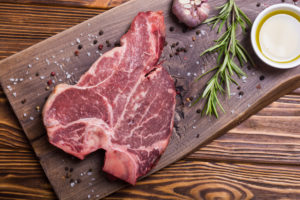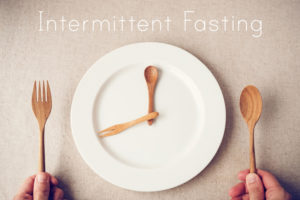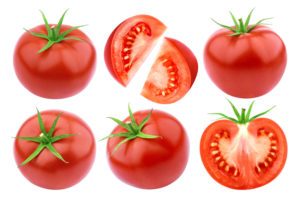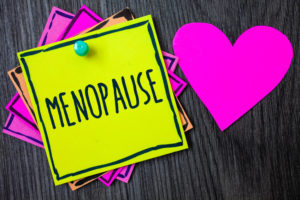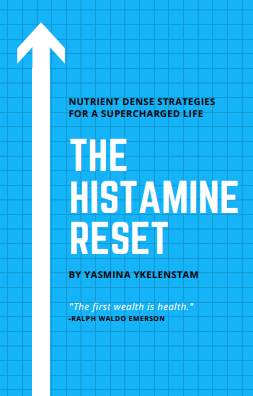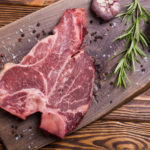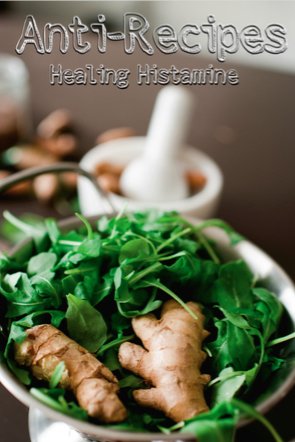
Can food choices really impact how you feel? A new study says, “absolutely.” Those of us with histamine intolerance often have intolerances to other foods and food components, such as gluten. Could gluten be behind your chronic pain condition?
STUDY LINKS GLUTEN INTOLERANCE TO NERVE PAIN
While neuropathy or “nerve pain” is usually associated with complications of diabetes (nerve damage due to high blood sugar levels), researchers out of the University of Sheffield in the UK found that gluten sensitivity could also predict a “gluten neuropathy.”
Peripheral Neuropathy is a condition of the nerves that results in weakness, numbness, and pain outside the Central Nervous System –particularly in the hands and feet. That’s why there are “diabetic shoes” out there — with extra cushion to ease the nerve pain and loose enough to promote optimal circulation. They are even sometimes called “Sugar Shoes”!
A 2015 study found that nearly one-third of people with peripheral neuropathy had gluten sensitivity. And that 9 times out of 10, following a strict gluten-free diet essentially eliminated the pain. In other words, continuing to consume gluten when you are sensitive to it causes nerve damage. Not good!
If your chronic inflammation is accompanied by chronic pain, it might be worth giving a strict gluten-free diet a try for a few months. There are certainly options! You can use gluten-free grains like rice or grain-like seeds like buckwheat. Some of these even have healing properties.
In fact, you’ll find recipes full of these foods and others with antihistamine and anti-inflammatory properties my books Anti-Recipes and The Anti-Cookbook.
However, you may find that even gluten-free grains don’t agree with you. If this is that case, please check out my posts on oxalic acid (high in grains) and how they raise histamine levels.
CLICK HERE FOR A FOUR WEEK HISTAMINE RESET WITH MEAL PLANNERS, STRESS RELIEF STRATEGIES & MORE
I suffered from decades of nerve pain in my stomach. Most days it didn’t matter what food went it, anything bothered my stomach. I remember the day I finally linked it to nerve damage was when even putting water in it caused electric-zapping-like feelings in my stomach. That’s when I realised that being super low histamine was less important than doing whatever I could to try and repair my frayed nerves.
POPULAR NATURAL NERVE REPAIR REMEDIES MAY RAISE HISTAMINE
One popular food or supplement for nerve regeneration is Lion’s Mane Mushroom (Hericium Erinaceus). While animal studies have shown potential for nerve regeneration (and there are dietary supplements for humans on the market), it may be dangerous to use if you have histamine intolerance.
Lion’s Mane works by raising Nerve Growth Factor (NGF), which unfortunately also raises histamine levels by causing mast cell degranulation. And mast cells themselves actually create, store, and release NGF. So, while Lion’s Mane does have some good evidence of repairing damaged nerves, it may also worsen inflammation and symptoms associated with histamine intolerance.
ALTERNATIVE NATURAL SOLUTIONS FOR NERVE REPAIR
Yogic Breathing/Pranayama
A study of 20 individuals doing yogic breathing (otherwise known as Pranayama) showed a significant increase in NGF which is conducive to nerve repair. Additionally, Yogic (Pranayama) Breathing Lowers Histamine levels.
Quercetin
Quercetin has come up on my site numerous times, as it is one of the top nutrients for lowering histamine. It is actually more effective than the mast cell-stabilizing drug, sodium cromolyn, in blocking cytokine release (histamine is a cytokine).Turns out that it also has been shown to be able to regenerate peripheral nerves. There you go! Kill two birds with one stone. Enjoy quercetin in apples and onions. I love red onions especially, for their rich color and added antioxidants.
Luteolin
Luteolin is another flavonoid that I talk about a lot. It is an important ingredient in a supplement I take –NeuroProtek. An animal model of diabetes showed that it, too, can help with peripheral neuropathy and nerve repair. Get some luteolin in your diet by eating plenty of celery, green peppers, thyme, and chamomile tea.
Anti-inflammatory Diet
In general, a nutrient-dense, anti-inflammatory, antihistamine diet is going to go a long way toward healing every aspect of the body –including the nerves. Removing gluten may be a missing piece in lowering inflammation and moving the body from a state of emergency to a state of rest and repair.
If you feel like you need to press the “Reset” button on your health and give your body a fresh start, check out my Plant-Powered 28 Day Histamine Reset. Both quercetin and luteolin are found throughout the Reset recipes. These nutrients, among many others, will help you get your body on track toward optimal health and energy.
——— REFERENCES ————
Aloe, L., Skaper, S. D., Leon, A., & Levi-Montalcini, R. (1994). “Nerve growth factor and autoimmune diseases.” Autoimmunity, 19(2):141-150. Retrieved from: https://www.ncbi.nlm.nih.gov/pubmed/7772704
Leon, A., Buriani, A., Dal Toso, R., Fabris, M., Romanello, S., Aloe, L., & Levi-Montalcini, R. (1994). Mast cells synthesize, store, and release nerve growth factor. Proceedings of the National Academy of Sciences of the United States of America, 91(9), 3739–3743. Retrieved from: https://www.ncbi.nlm.nih.gov/pubmed/8170980
Li, M., Li, Q., Zhao, Q., Zhang, J., & Lin, J. (2015). Luteolin improves the impaired nerve functions in diabetic neuropathy: behavioral and biochemical evidences. International Journal of Clinical and Experimental Pathology, 8(9), 10112–10120. Retrieved from: https://www.ncbi.nlm.nih.gov/pmc/articles/PMC4637533/
Park, Y. S., Lee, H. S., Won, M. H., Lee, J. H., Lee, S. Y., & Lee, H. Y. (2002). Effect of an exopolysaccharide from the culture broth of Hericium erinaceus on enhancement of growth and differentiation of rat adrenal nerve cells. Cytotechnology, 39(3), 155–162. http://doi.org/10.1023/A:1023963509393
Samberkar S., Gandhi S., Naidu, M., Wong, K. H., Raman, J., Sabaratnam, V. (2015). “Lion’s Mane, Hericium erinaceus and Tiger Milk, Lignosus rhinocerotis (Higher Basidiomycetes) Medicinal Mushrooms Stimulate Neurite Outgrowth in Dissociated Cells of Brain, Spinal Cord, and Retina: An In Vitro Study.” International Journal of Medicinal Mushrooms, 17(11), 1047-1054. Retrieved from: https://www.ncbi.nlm.nih.gov/pubmed/26853959
Tal, M. & Liberman, R. (1997). “Local injection of nerve growth factor (NGF) triggers degranulation of mast cells in rat paw.” Neuroscience Letters. 221(2-3), 129-32. Retrieved from: https://www.ncbi.nlm.nih.gov/pubmed/9121681/
Wang, W., Huang, C. Y., Tsai, F. J., Tsai, C. C., Yao, C. H., & Chen, Y. S. (2011). “Growth-promoting effects of quercetin on peripheral nerves in rats.”
The International Journal of Artificial Organs, 34(11):1095-1105. Retrieved from: https://www.ncbi.nlm.nih.gov/pubmed/22183523
Wong, K. H., Naidu, M., David R. P., Bakar, R. M., & Sabaratnam, V. (2012). “Neuroregenerative potential of lion’s mane mushroom, Hericium erinaceus (Bull.: Fr.) Pers. (higher Basidiomycetes), in the treatment of peripheral nerve injury (review). International Journal of Medicinal Mushrooms,
14(5):427-446. Retrieved from: https://www.ncbi.nlm.nih.gov/pubmed/23510212


